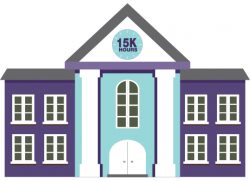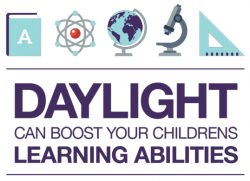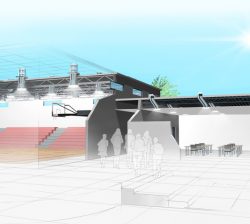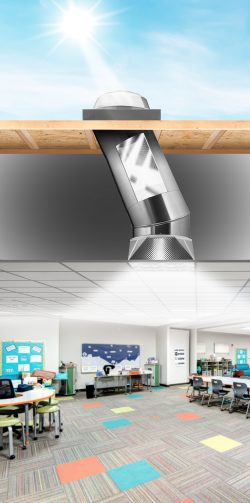Building Better Schools with Daylight to Improve Student Performance


Did you know that by the time a student graduates from high school, she or he has spent 15,600 hours inside a school building? It is perhaps no surprise then, that classroom design has a significant impact on effective learning, as well as children’s health and well-being.
Of all of the classroom design options available to improve student performance and health in today’s classrooms, it is access to daylight that has been proven to have the most positive effects.
Why daylight?
It’s Science … Natural light promotes a healthy teaching and learning environment – specifically through vitamin D generation, circadian regulation and the production of neural transmitters, such as serotonin.
Vitamin D is good for the body’s internal system, helping absorb calcium – a crucial component for the bone health of growing kids.
Circadian rhythms influence our sleep-wake cycles, hormone release, eating habits and digestion, body temperature and other important bodily functions.
Serotonin, sometimes known as the happy chemical, leaves us feeling more energized, happy and well-rested, while fighting and reducing stress, anxiety, depression and seasonal affective disorder (SAD).
What does all this mean? Students exposed to daylight will not only have the energy to play in the schoolyard but also improved concentration in the classroom.
It’s Psychology too … Stress is characterized by hormonal and physiological changes that occur in response to threats or disagreeable events – which, sounds a lot like high school. Researchers found students feel better, safer and have less stress when they have access to natural light because it creates a sense of physical and mental comfort.
Overall, it all adds up to better student performance and education …
 One study found that students in classrooms with high levels of daylight exhibited faster and more effective learning rates than those with low levels of daylight. Specifically, classrooms with daylight resulted in students having improved math scores of (20%) and reading (26%) – as compared with students under little to no daylight.
One study found that students in classrooms with high levels of daylight exhibited faster and more effective learning rates than those with low levels of daylight. Specifically, classrooms with daylight resulted in students having improved math scores of (20%) and reading (26%) – as compared with students under little to no daylight.
So how do you design with daylight?

When designing new schools or remodeling old schools, introducing adequate daylight can often be challenging. Facility planning teams must look for adaptable, energy-efficient solutions to create these healthy and comfortable learning environments.
With Solatube Tubular Daylighting Devices (TDDs), daylight can reach places never thought possible, overcoming limitations associated with windows and traditional skylights in both new and retrofit applications.
What are TDDs exactly? 
They start with domes that sit on the roof of a building, engineered to capture sunlight from virtually any angle. They then push that light into the building space via highly reflective tubes and fixtures that diffuse it for a beautiful spread of natural light into the area beneath. Solatube Daylight Dimmers can also be fitted to specific TDD systems to allow classrooms to be darkened when needed, much like electrical lights. The simple wall switch makes activities like watching videos or presenting a breeze.
The best part is that this technology nearly eliminates infrared wavelengths from 950-2500nm, allowing the system to deliver a full spectrum of visible light without bringing in the heat, making TDDs perfect for hot climates where traditional skylights may be a problem.
If you want to learn more about how to maximize natural light to transform your school and improve student performance and health, you can call 888.SOLATUBE to set up a free consultation or visit Solatube.com to find your local distributor.
https://schools.forhealth.org/
https://www.wseas.us/e-library/conferences/2013/Malaysia/MACMESE/MACMESE-20.pdf
https://www.lrc.rpi.edu/programs/daylighting/pdf/DaylightingPatternBook_Final.pdf